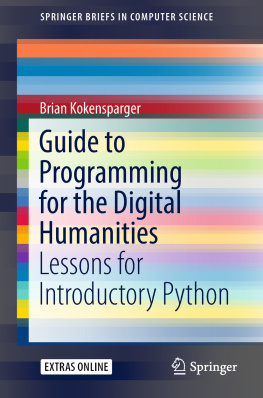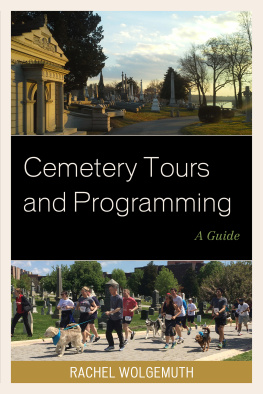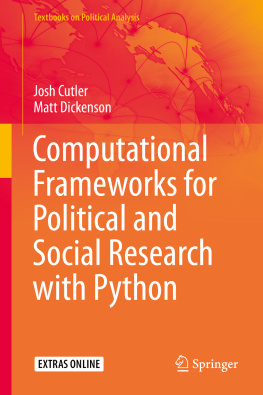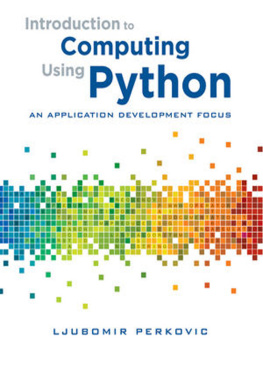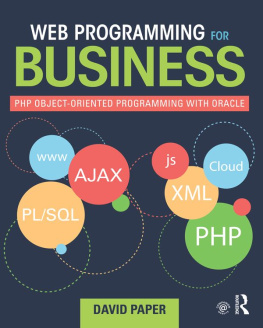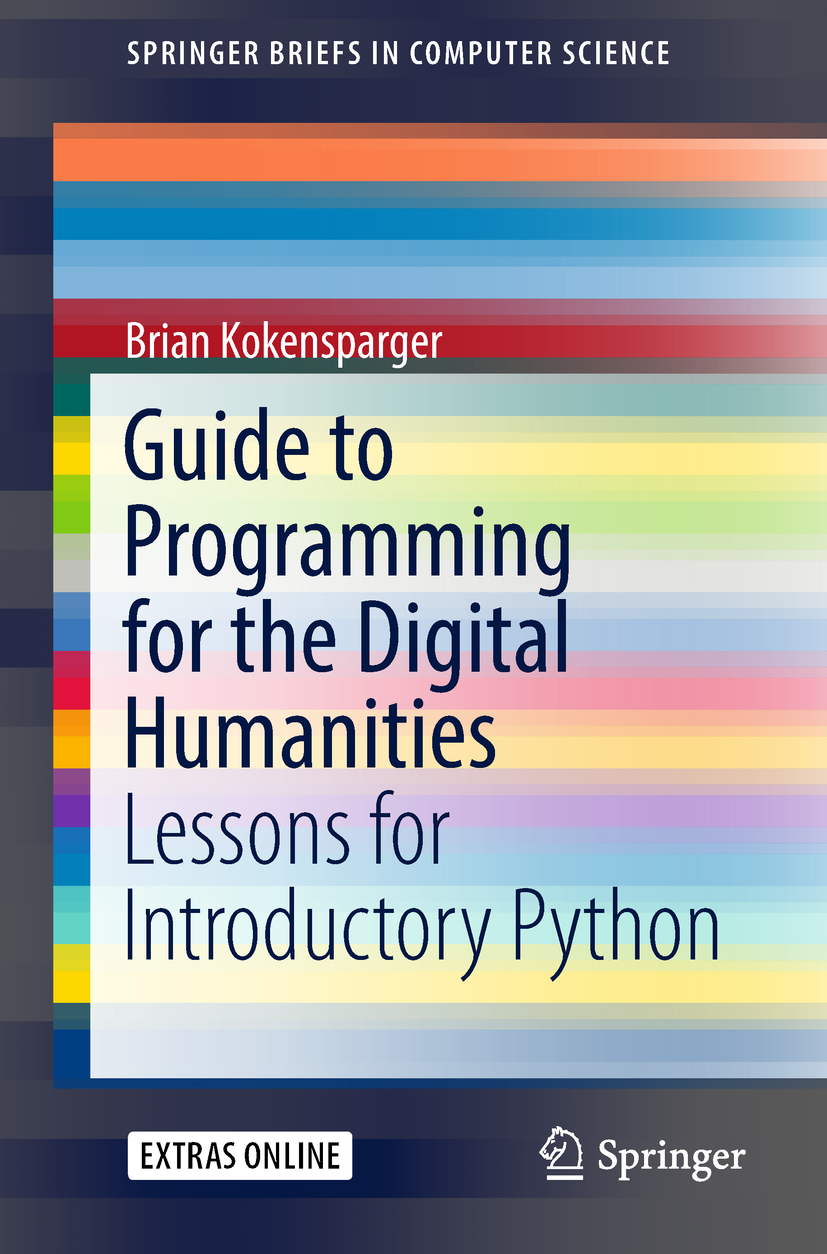Brian Kokensparger - Guide to Programming for the Digital Humanities: Lessons for Introductory Python
Here you can read online Brian Kokensparger - Guide to Programming for the Digital Humanities: Lessons for Introductory Python full text of the book (entire story) in english for free. Download pdf and epub, get meaning, cover and reviews about this ebook. year: 2018, publisher: Springer International Publishing, genre: Computer. Description of the work, (preface) as well as reviews are available. Best literature library LitArk.com created for fans of good reading and offers a wide selection of genres:
Romance novel
Science fiction
Adventure
Detective
Science
History
Home and family
Prose
Art
Politics
Computer
Non-fiction
Religion
Business
Children
Humor
Choose a favorite category and find really read worthwhile books. Enjoy immersion in the world of imagination, feel the emotions of the characters or learn something new for yourself, make an fascinating discovery.
- Book:Guide to Programming for the Digital Humanities: Lessons for Introductory Python
- Author:
- Publisher:Springer International Publishing
- Genre:
- Year:2018
- Rating:5 / 5
- Favourites:Add to favourites
- Your mark:
Guide to Programming for the Digital Humanities: Lessons for Introductory Python: summary, description and annotation
We offer to read an annotation, description, summary or preface (depends on what the author of the book "Guide to Programming for the Digital Humanities: Lessons for Introductory Python" wrote himself). If you haven't found the necessary information about the book — write in the comments, we will try to find it.
As an introduction to programming for the Digital Humanities (DH), this book presents six key assignments oriented on DH topics. The topics include Computing Change Over Time (calculating burials at a historic cemetery), Visualizing Change Over Time (visualizing the burials at the historic cemetery), Textual Analysis (finding word frequencies and stop words in public domain texts), XML Transformation (transforming a simplified version of XML into HTML styled with CSS), Stylometry (comparing the measured features of graphic images), and Social Network Analysis (analyzing extended relationships in historic circles).
The book focuses on the practical application of these assignments in the classroom, providing a range of variations for each assignment, which can be selected on the basis of students specific programming background and skills; atomic assignments, which can be used to give students the experience they need to successfully complete the main assignments; and some common pitfalls and gotchas to manage in the classroom.
The books chief goals are to introduce novice computer science (CS) students to programming for DH, and to offer them valuable hands-on experience with core programming concepts.
Brian Kokensparger: author's other books
Who wrote Guide to Programming for the Digital Humanities: Lessons for Introductory Python? Find out the surname, the name of the author of the book and a list of all author's works by series.

